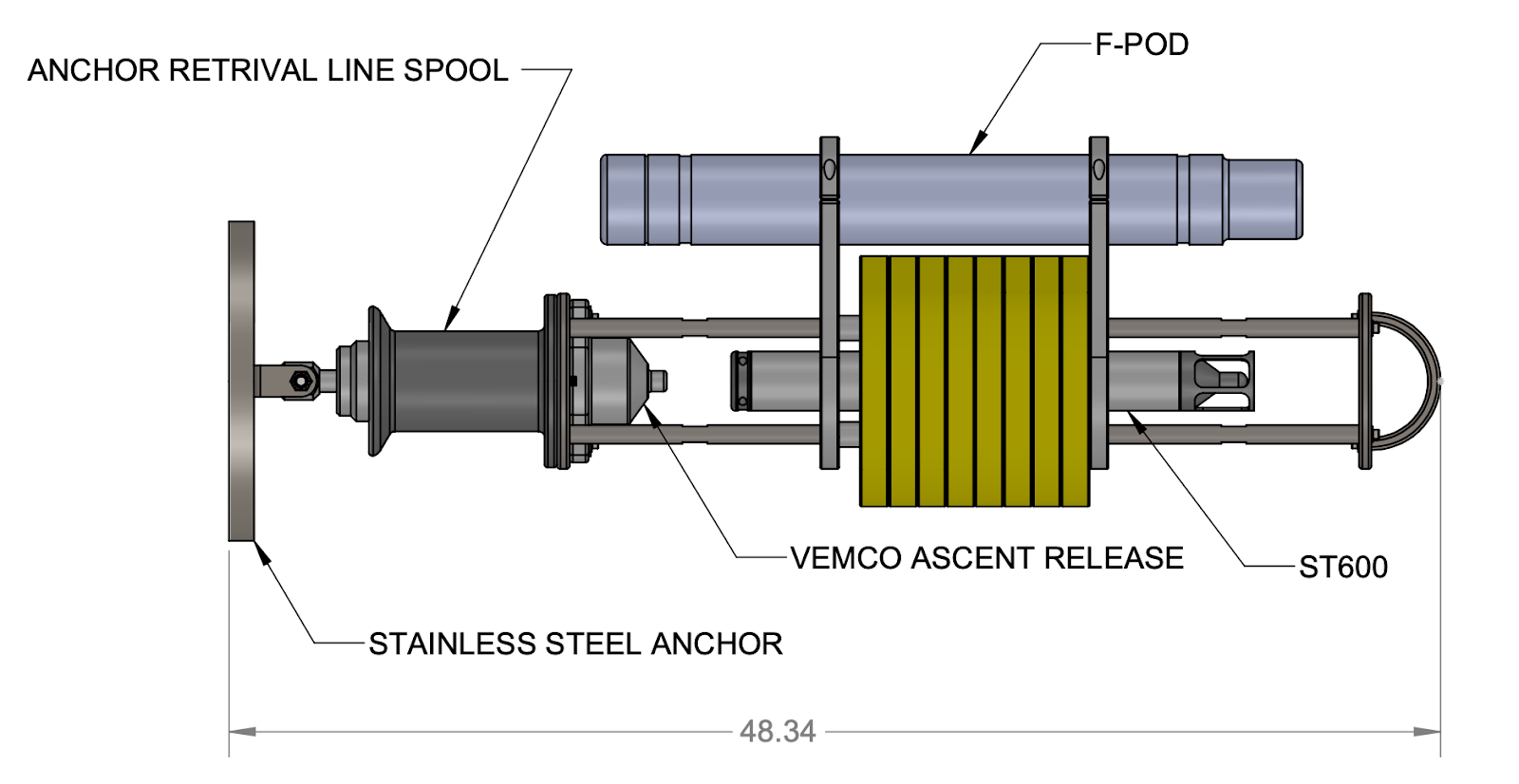Field Methods
NEFSC Passive Acoustic Branch (PAB) deploys recorders throughout the western Atlantic to acoustically monitor local species, primarily the critically endangered North Atlantic right whale (NARW) protected under the Endangered Species Act of 1973 and the Marine Mammal Protection Act of 1972. Monitoring the population status of NARWs is a top priority for NEFSC’s Protected Species Division (PSD).
We partner with the Bureau of Ocean Energy Management (BOEM), Maine Department of Marine Resources (MEDMR), the U.S. Navy, and NOAA’s Office of National Marine Sanctuaries (ONMS) to collect acoustic data using bottom-mounted moorings (see right figure). NEFSC PAB executes fieldwork to retrieve moorings and redeploy at designated sites. Our primary turnaround sites are located in Stellwagen Bank National Marine Sanctuary (SBNMS), offshore Gulf of Maine, and southern New England. We occasionally deploy moorings belonging to collaborative research groups (ex. PMEL), which are not included in the mooring count for each fieldwork trip outlined below. Mooring counts will fluctuate as we decide to deploy more or less at certain sites.

Resources
Moorings
SoundTraps referenced in the following guides are ST600s. As a general rule of thumb, check manufacturer manuals for further detail as specs vary between SoundTrap models. The following mooring diagrams are intended to be guides.
Tossits
- Utilizes VEMCO acoustic release and anchor line spool for system retrieval
- Turnaround every 6 months

Shallow Water Roped Mooring
- Low profile mooring consisting of 11” float and two 35lb weights.
- Turnaround every 5 months
- Recommended for any locations shallower than 150m

Deep Water Roped Mooring
- More robust structure consisting of 14” trawl float and 2 75lb weights
- Turnaround every 5 months
- Recommended for locations 150 - 350m depth

Reusable Weight, Roped Mooring

Add Ons
- FPODS are occasionally incorporated into mooring assembly to collect high-frequency odontocete click data.
- Deep FPODs used for depths between 175 - 2000m
- Include a pressure relief valve for SoundTraps between 200 - 500m depth (max).
Mooring Best Practices
Floats
- Goldilocks zone: floats must be buoyant enough to keep mooring upright, but minimize surface area to avoid downward forces acted upon by currents
- For deepwater buoys, consider floats that would bring mooring to the surface quickly - if the mooring floats the surface too slowly, currents could push the mooring away from the vessel and make retrieval difficult.
I-beams vs. plate weights
- I beams and plate weights are interchangeable: I beams are more affordable, provide vertical structure that digs into the ground and provides support against currents